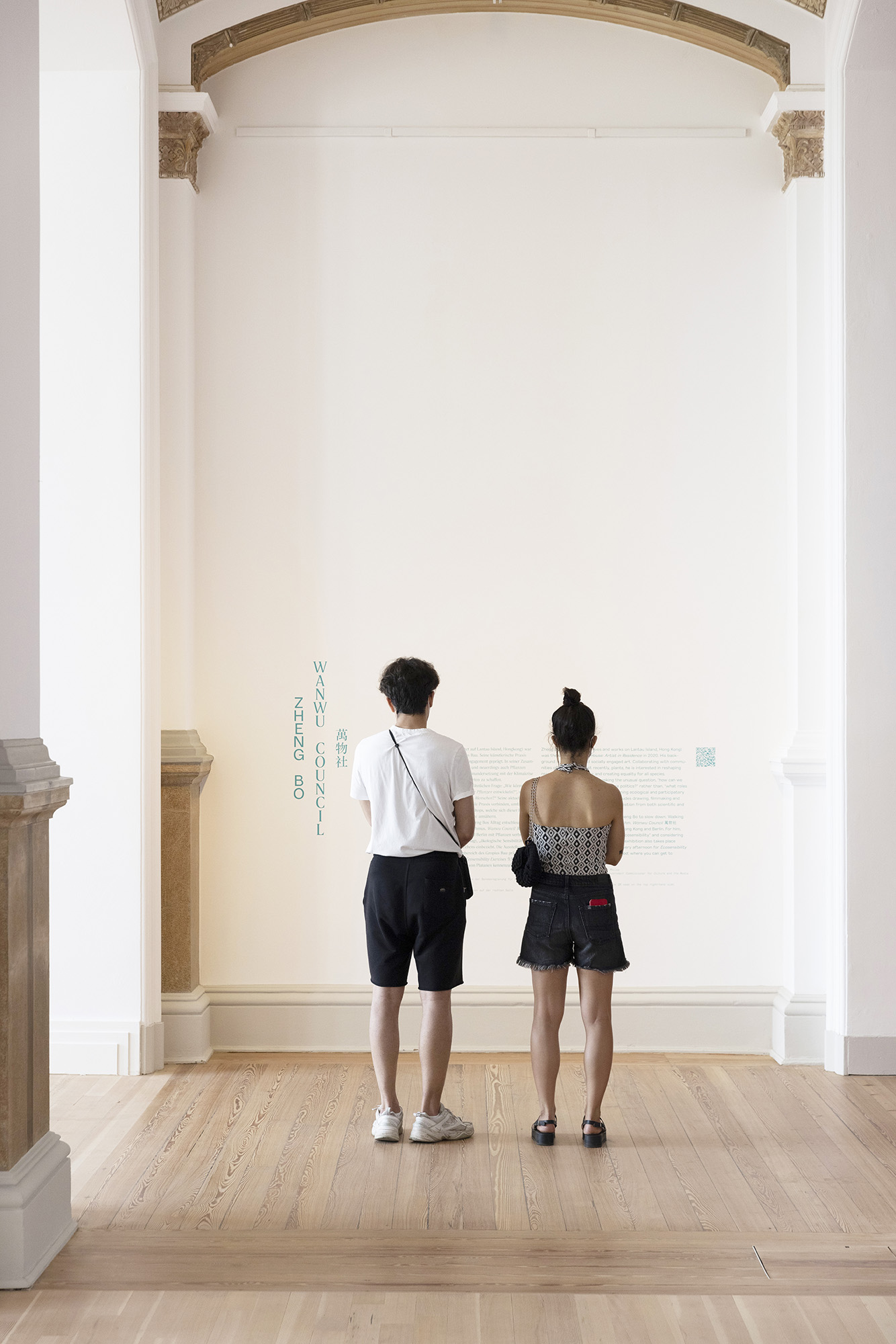

|
Zheng Bo: Wanwu Council 萬物社
Curated by Stephanie Rosenthal with Clare Molloy
|
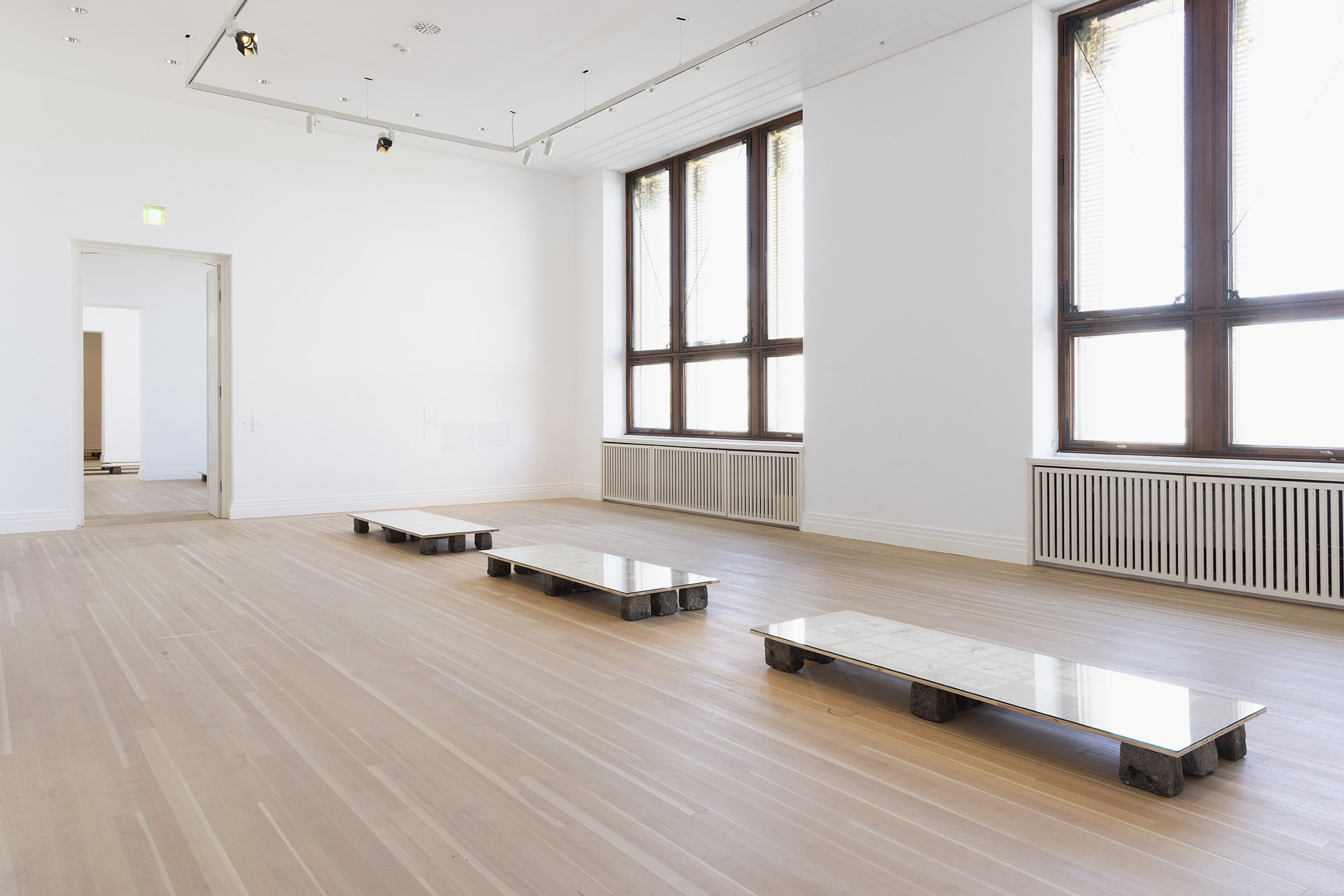
|
Drawing Life 寫生
2020-2021
|
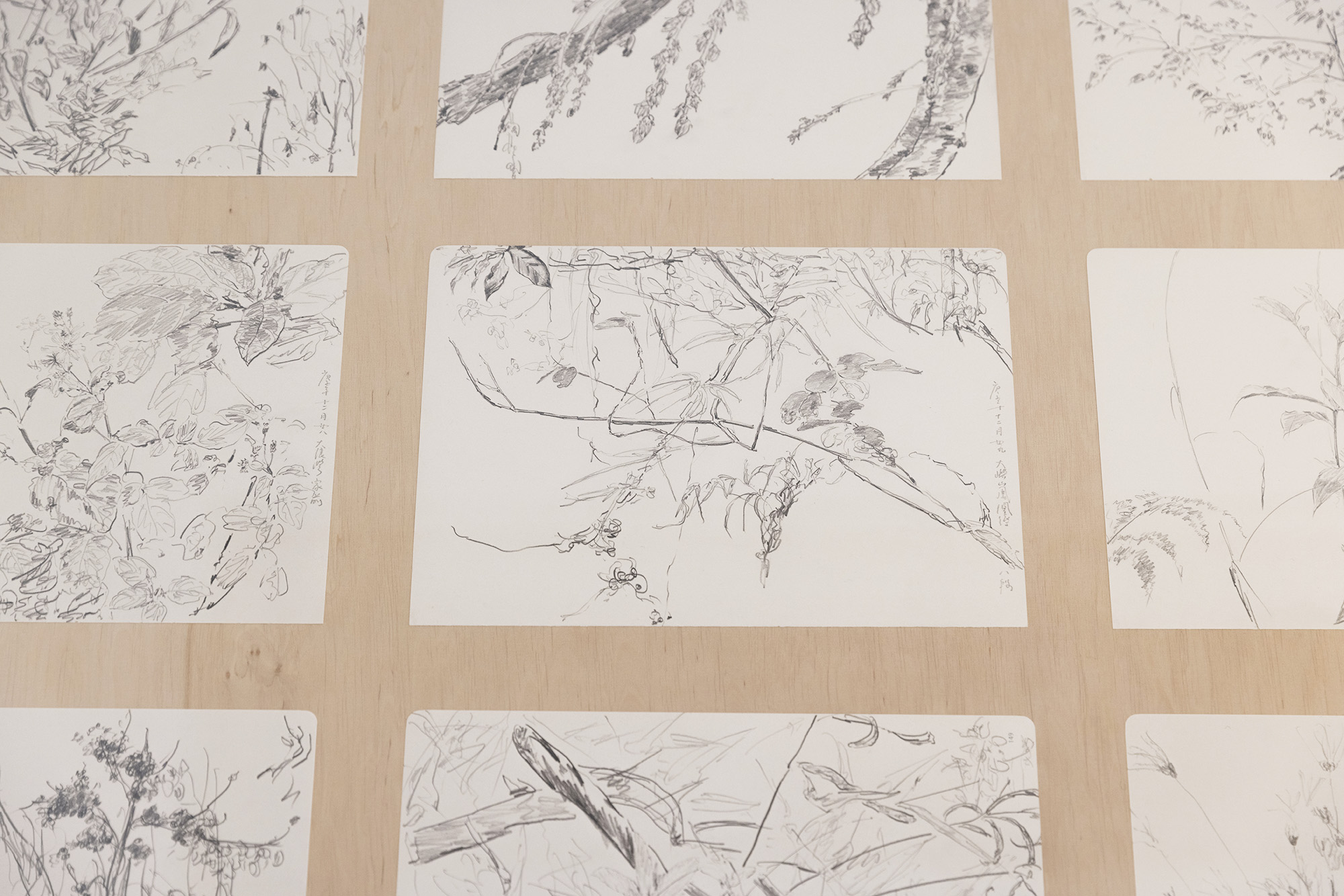
|
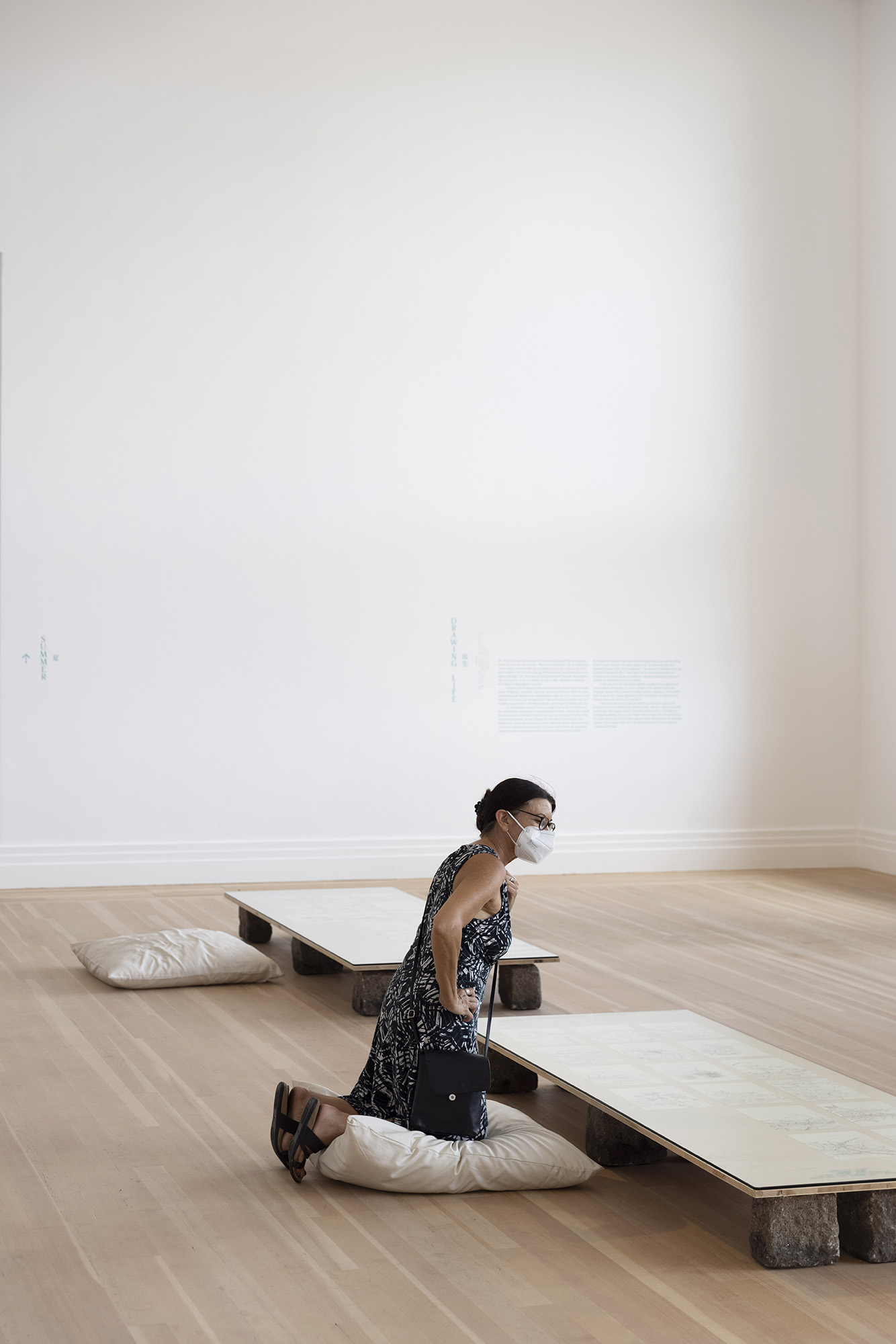
|
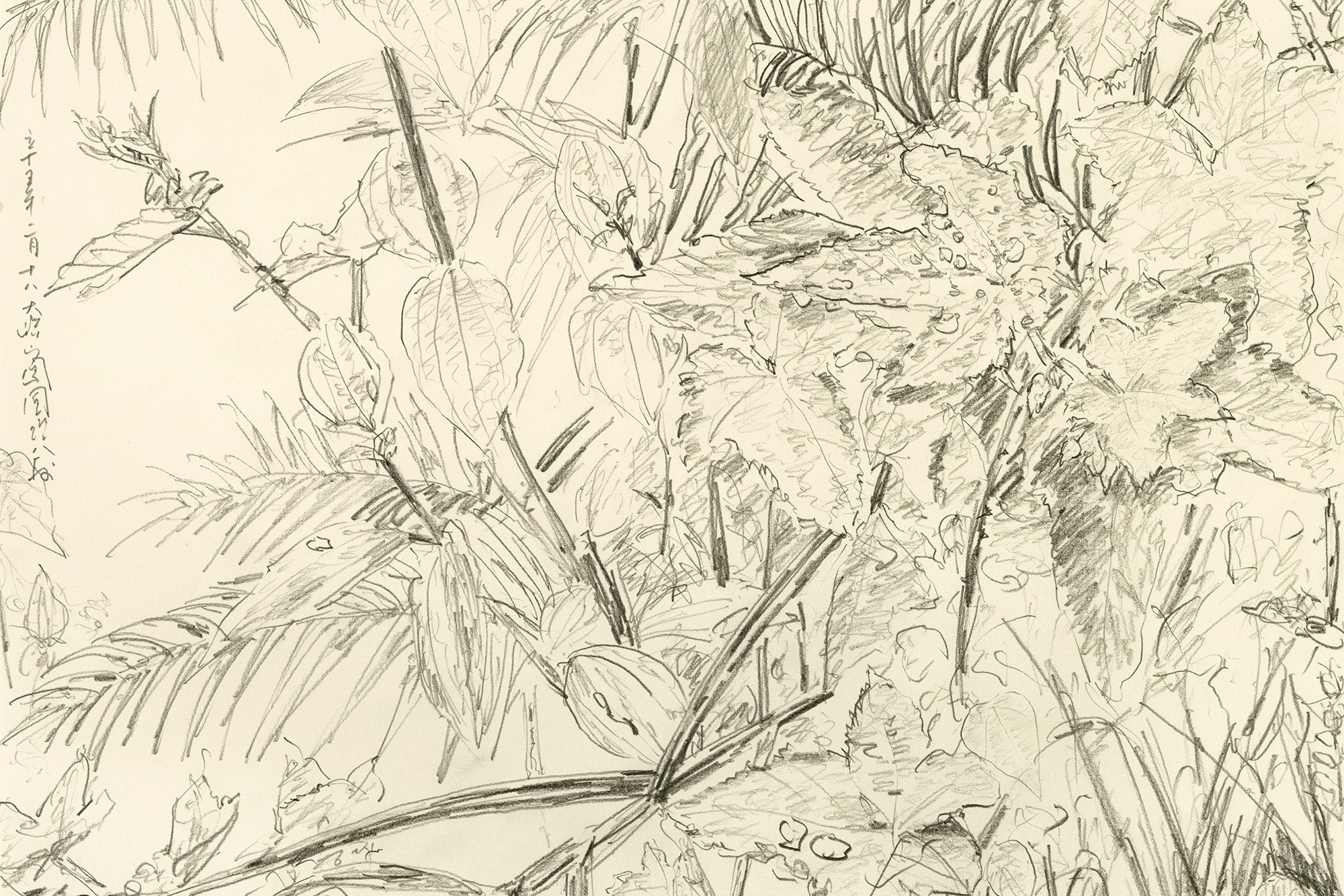
|
Hong Kong’s subtropical climate has produced a dense evolution of luscious plants, which grow together as collective habitats. Zheng Bo would initially try to identify the species of each plant that he was drawing using apps, websites and books. However, he subsequently changed his approach to just being with what he describes as “the collective”.For Zheng Bo, this means having a physical experience opposite to the fast-paced life of constantly moving. The COVID-19 pandemic forced him to spend more time at home. With thousands of plants growing on Lantau Island, he would hike for twenty minutes before leaving the main route for an old trail. Drawing became a way of sitting with multiple species, slowing down, looking carefully and appreciating nature.Every plant is fascinating if you look closely enough, even the least respected of plants, such as those labelled weeds. The mind-set of pre-modern Chinese artists was ecological because they saw humans as just a small part of nature, which is reflected in how they drew classical landscapes. Zheng Bo continues this tradition. While drawing is a simple practice, it is also a way to see life, to sense life and to record life in all of its complexity. |
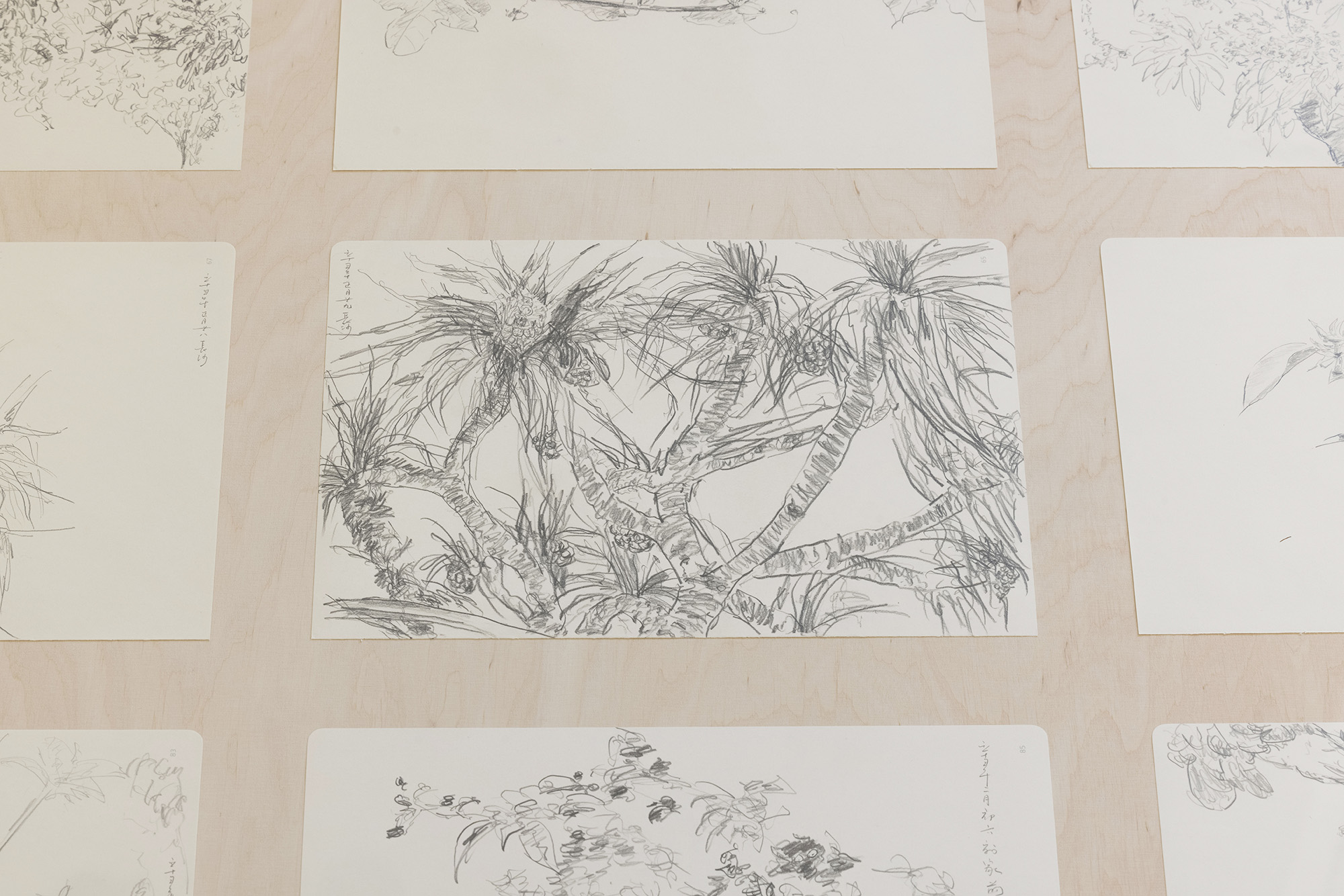
|
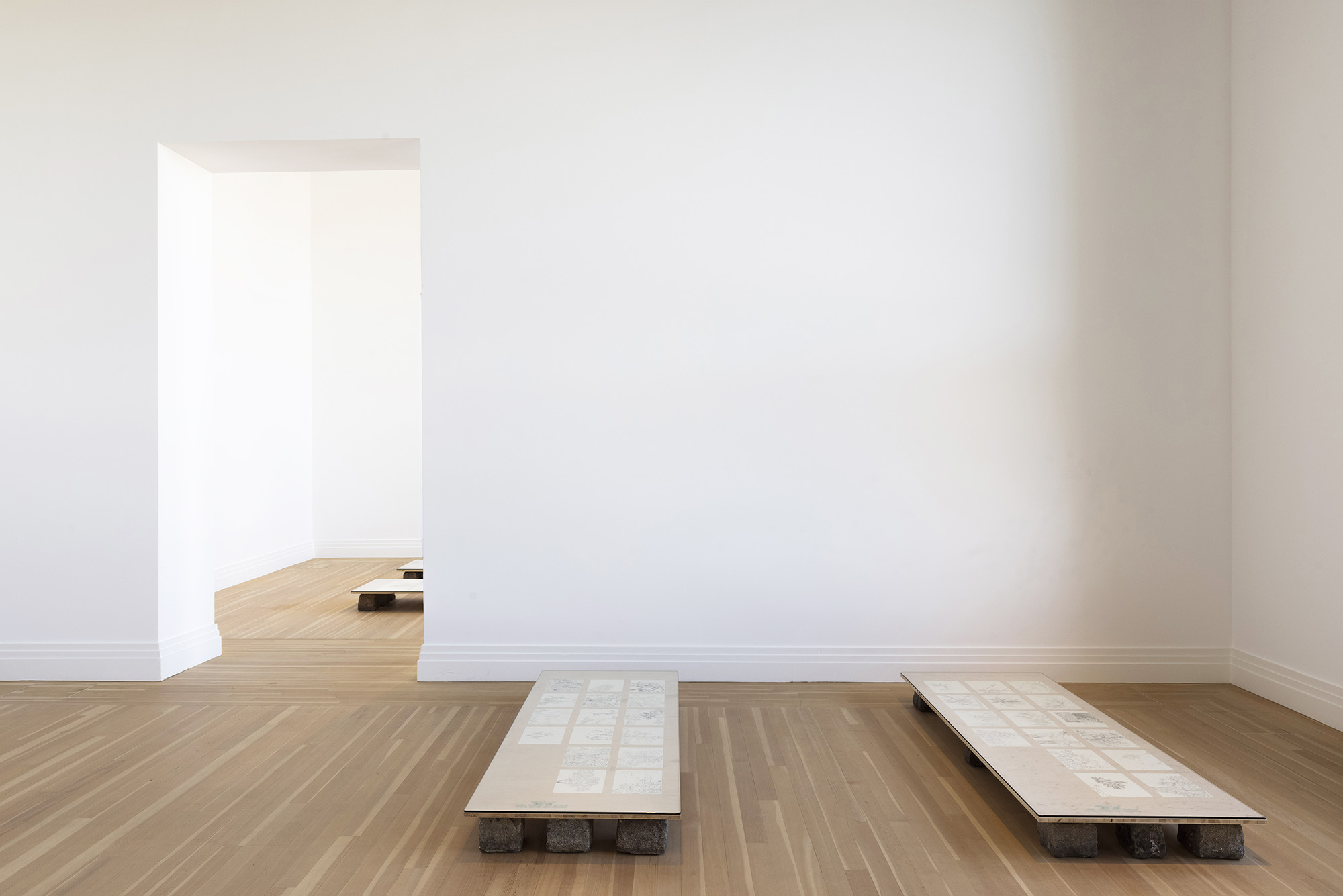
|
In August 2020, Zheng Bo arrived in Berlin as part of his residency at the Gropius Bau. This room and the next bring together drawings from the artist’s time in Europe, including works from Berlin, Frankfurt and Lisbon. There is a clear change from Hong Kong’s subtropical plant life to the flora of northern and southern Europe.He began to draw trees for the first time in Berlin. Looking out from his studio on the second floor of the Gropius Bau, he saw an extensive canopy of plane trees and realised that there is a small forest living next to the building. Rising between the cobblestones of the car park, Zheng Bo called this Gropius Wood. Observing their vitality he said, “They grew more each day in summer, produced lots of hanging fruits in autumn, and then all of sudden decided to shed their leaves when winter arrived. There are many birds, as well as bacteria, air, light and energy flowing through this place.”Zheng Bo increasingly spent time outside with this community of over 100 plane trees. Planted in 1987, Gropius Bau’s trees have been practicing politics together for 34 years. Fossil records of plane trees show that they have existed for 115 million years, originating from the Lower Cretaceous period. |
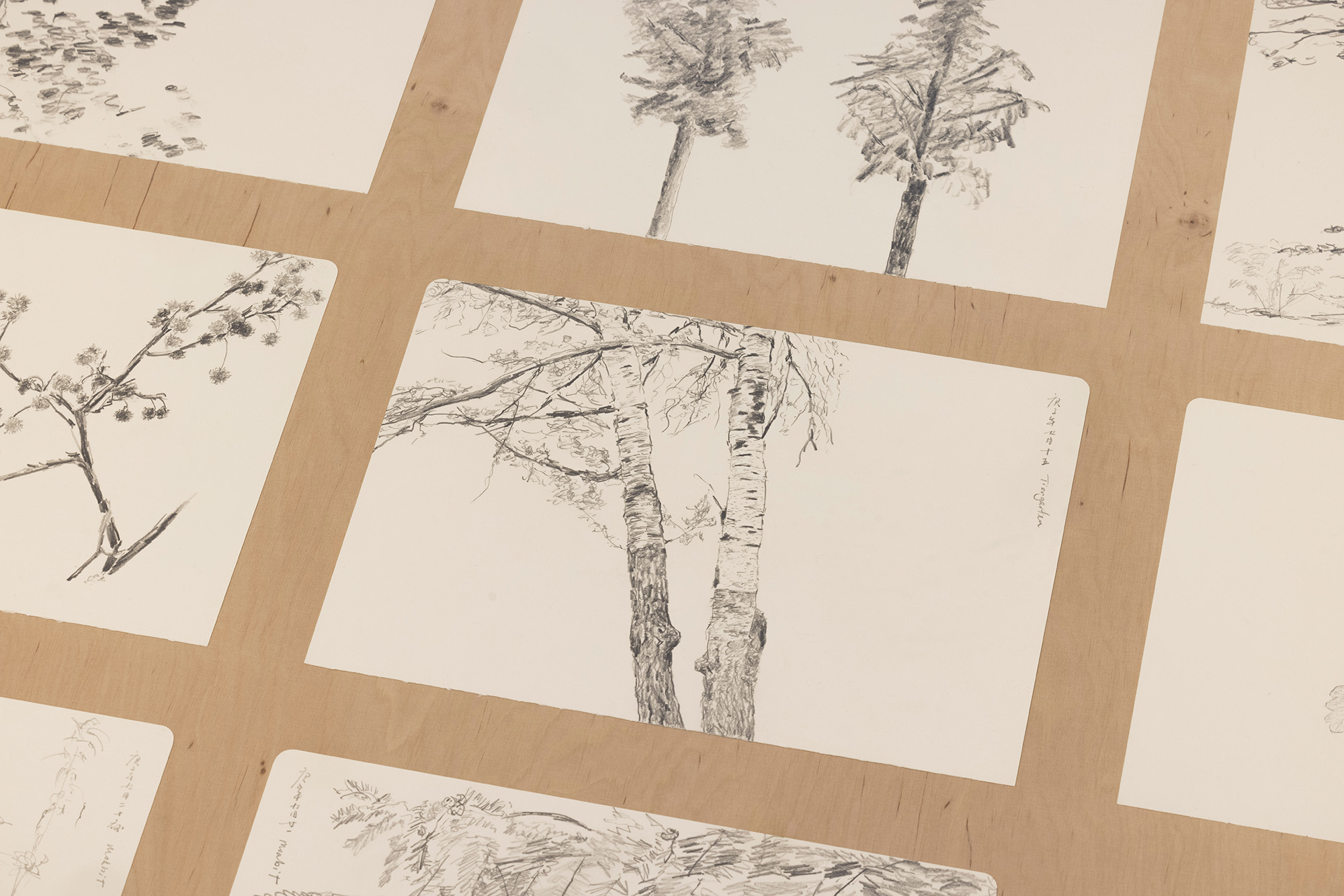
|
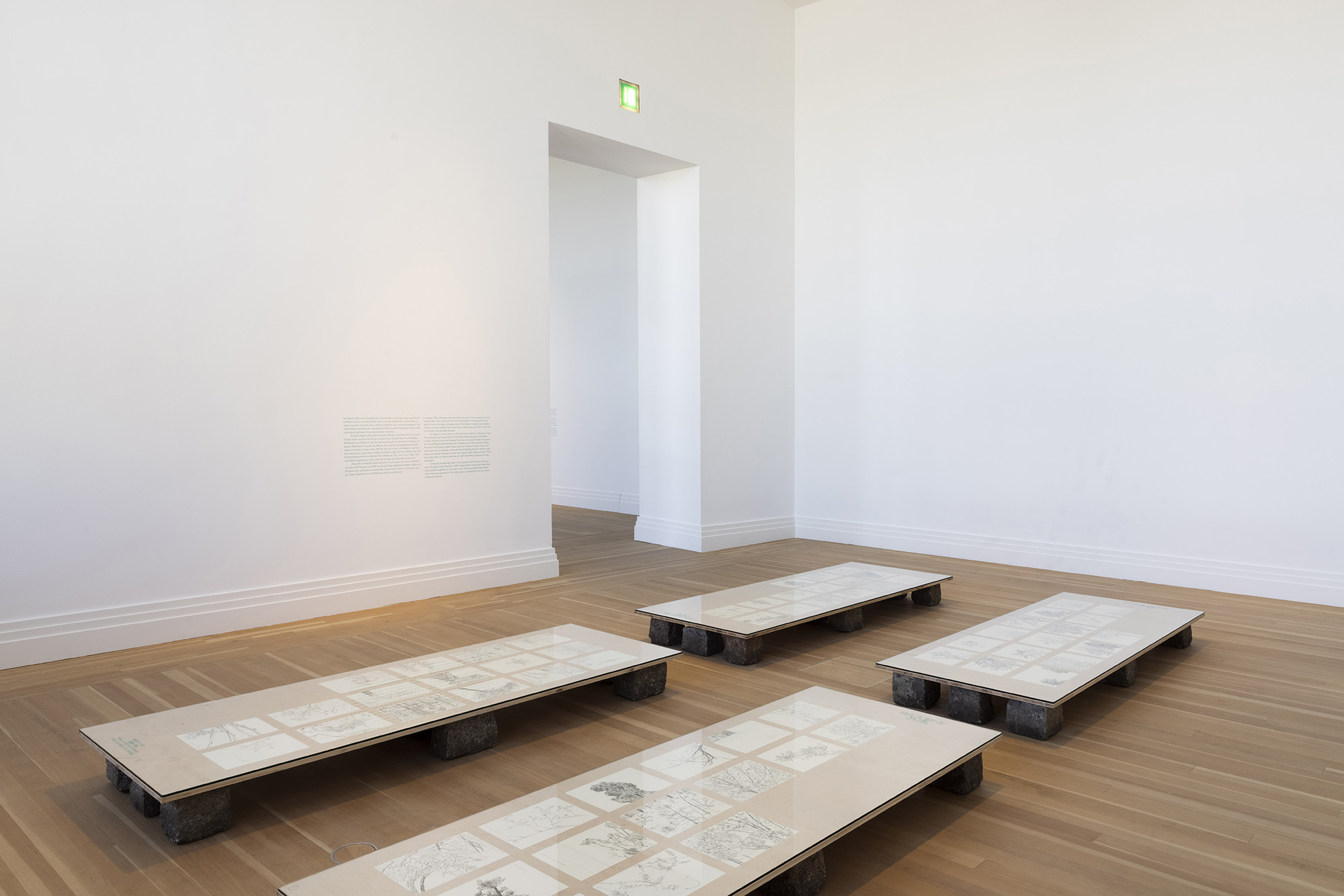
|
Many of the drawings in this room depict urban foliage from areas around Moabit, where the artist in residence flat is located. Zheng Bo often visited the nearby lake Plötzensee, where he focused on sketching the ecosystem by the water. This small glacial lake formed in the last ice age and is surrounded by a variety of dense vegetation with various flora and fauna. The artist believes that “plants should never be considered alone – they are bridges to other forms of life.”During Zheng Bo’s residency programme back in 2020, which was titled Botanical Comrades 植物同志, as well as drawing Berlin’s plant life he organised outdoor group events for each new solar term. This was a way of developing understandings of the politics of plants. Activities included drawing weeds in Gropius Wood and walk-readings in Tiergarten, where people would read passages from the Dao De Jing to the trees.Attributed to the 6th Century BCE sage Laozi, Dao De Jing is a foundational Chinese text about ecological thinking where humans are just one of many life forms sharing the universe. Speaking of the walk-reading experience Zheng Bo emphasised how “trees, birds, soil and spores help us to breathe deeply and to sense expansively.” |
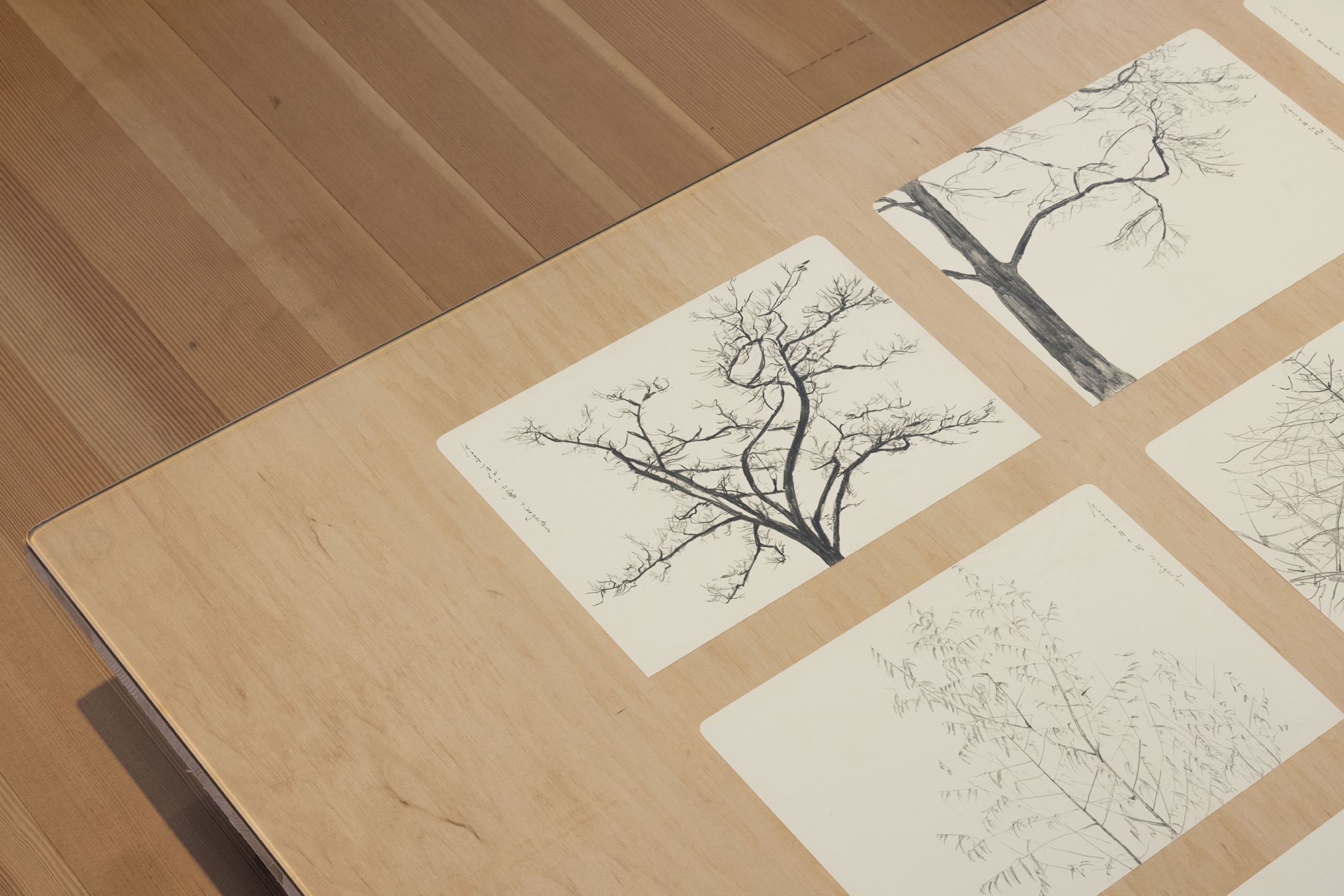
|
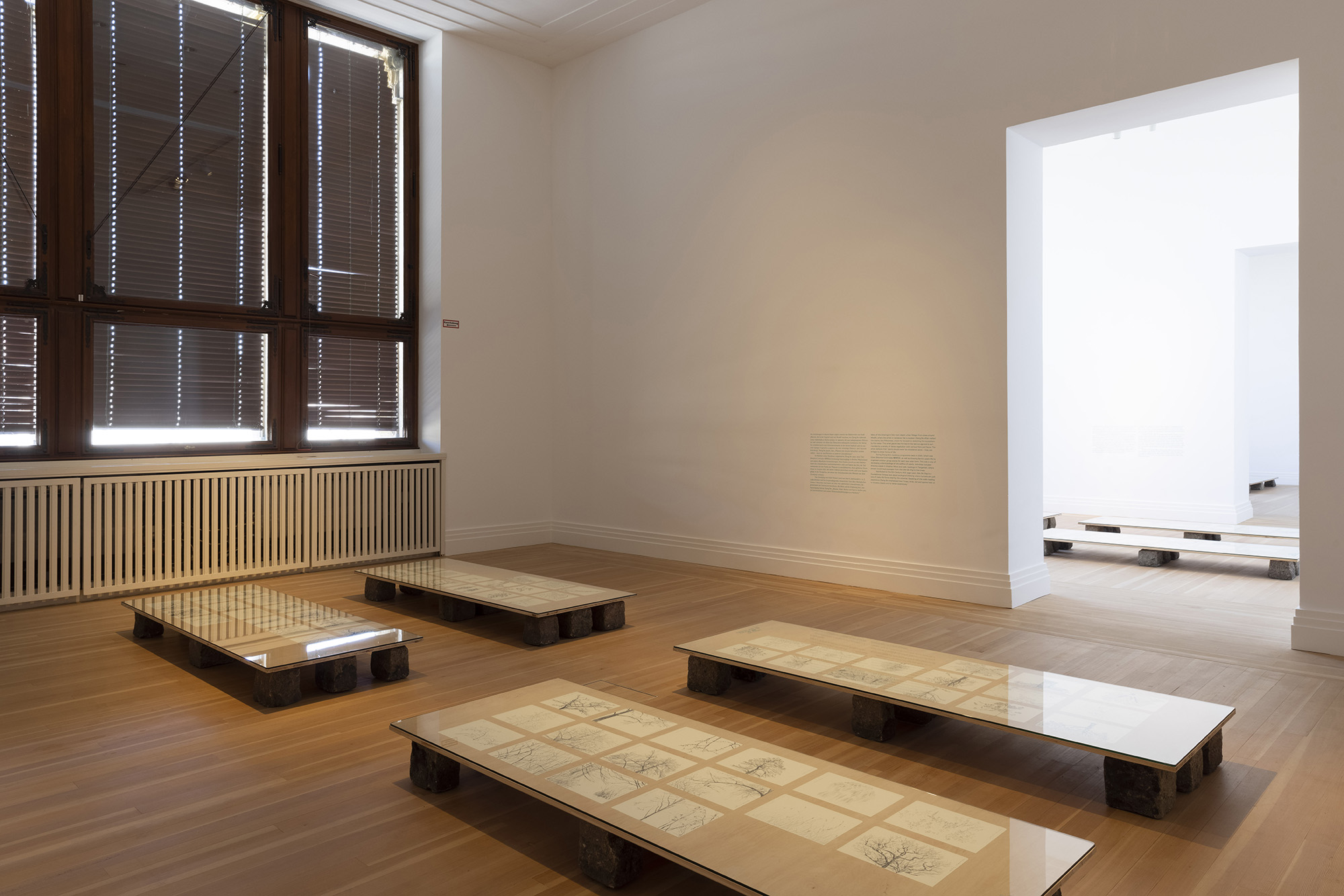
|
The Drawing Life 寫生 series is on-going and continues wherever Zheng Bo travels. The works in this room and the next were done after Zheng Bo’s Gropius Bau residency, having returned to Hong Kong’s subtropical climate.One set, drawn in quarantine, depicts the growth of a small fern that accompanied Zheng Bo over a whole solar term. Others were drawn in Kowloon near the university where Zheng Bo teaches, and on Lantau Island, where he lives. This spring the lychee trees in his village bloomed spectacularly. Zheng Bo’s neighbour asked him to draw a lychee tree planted by her late-father on the family’s land, highlighting the history that plants hold within them and the stories they can tell.The artist has emphasised the sustainability of drawing as a simple practice. He says, “I only need to have a piece of paper and a 6B pencil. For one year, I have used only three pencils, so this practice needs very few resources.” Committed to reusing materials, here the drawings are collectively displayed on wooden boards. These boards rest on granite stones that have been removed from around the trees in Gropius Wood, connecting the inside and outside of the exhibition. |
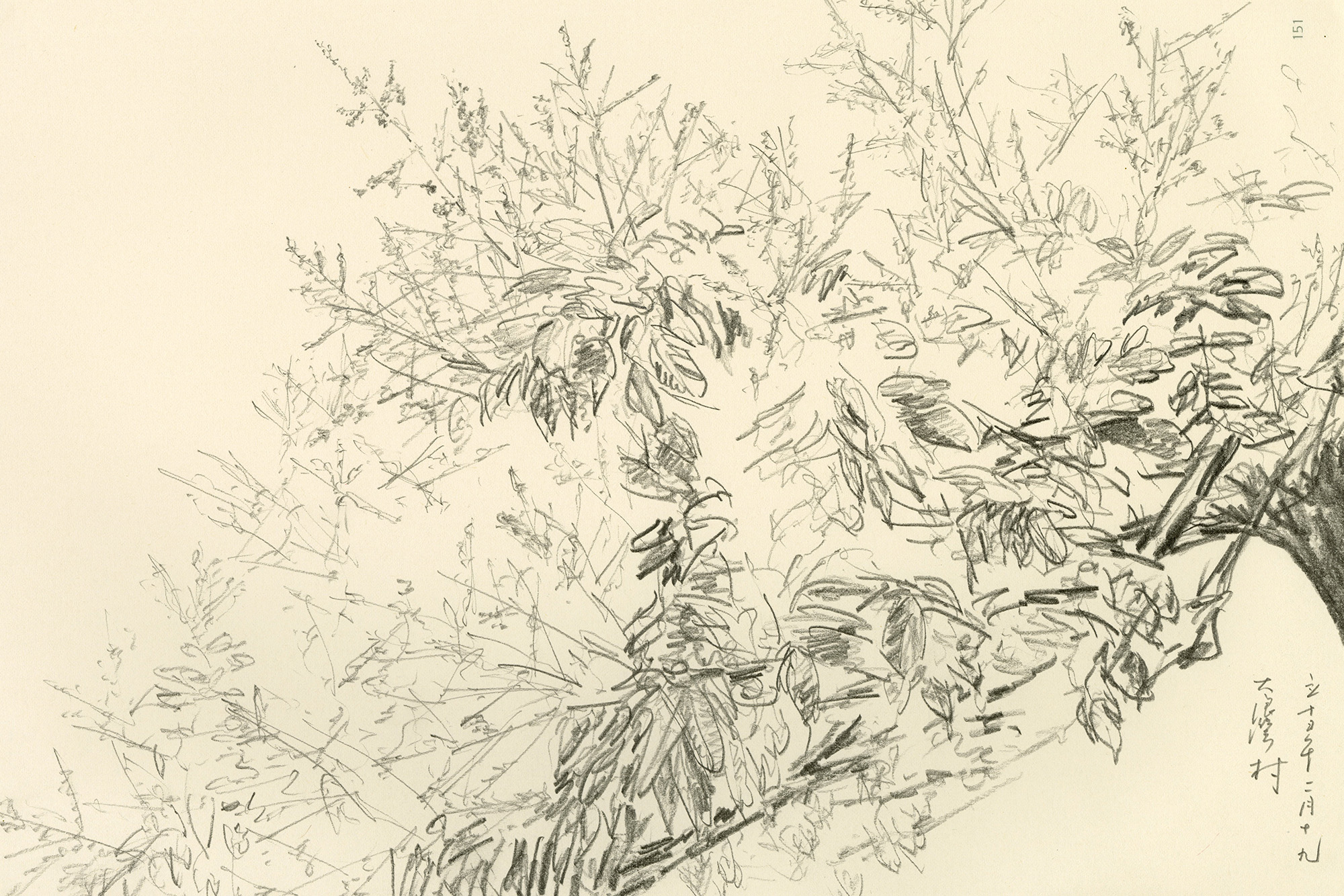
|
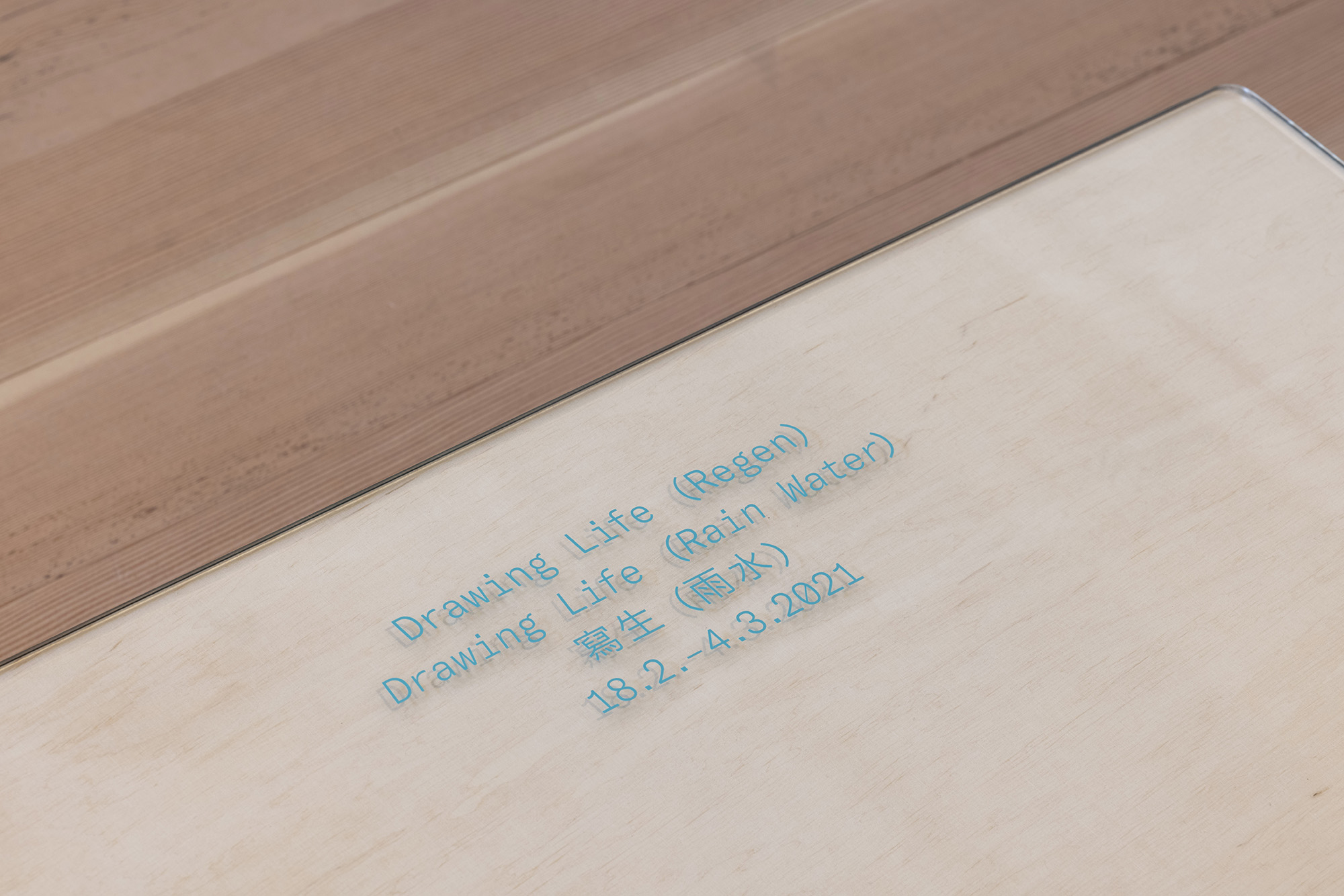
|
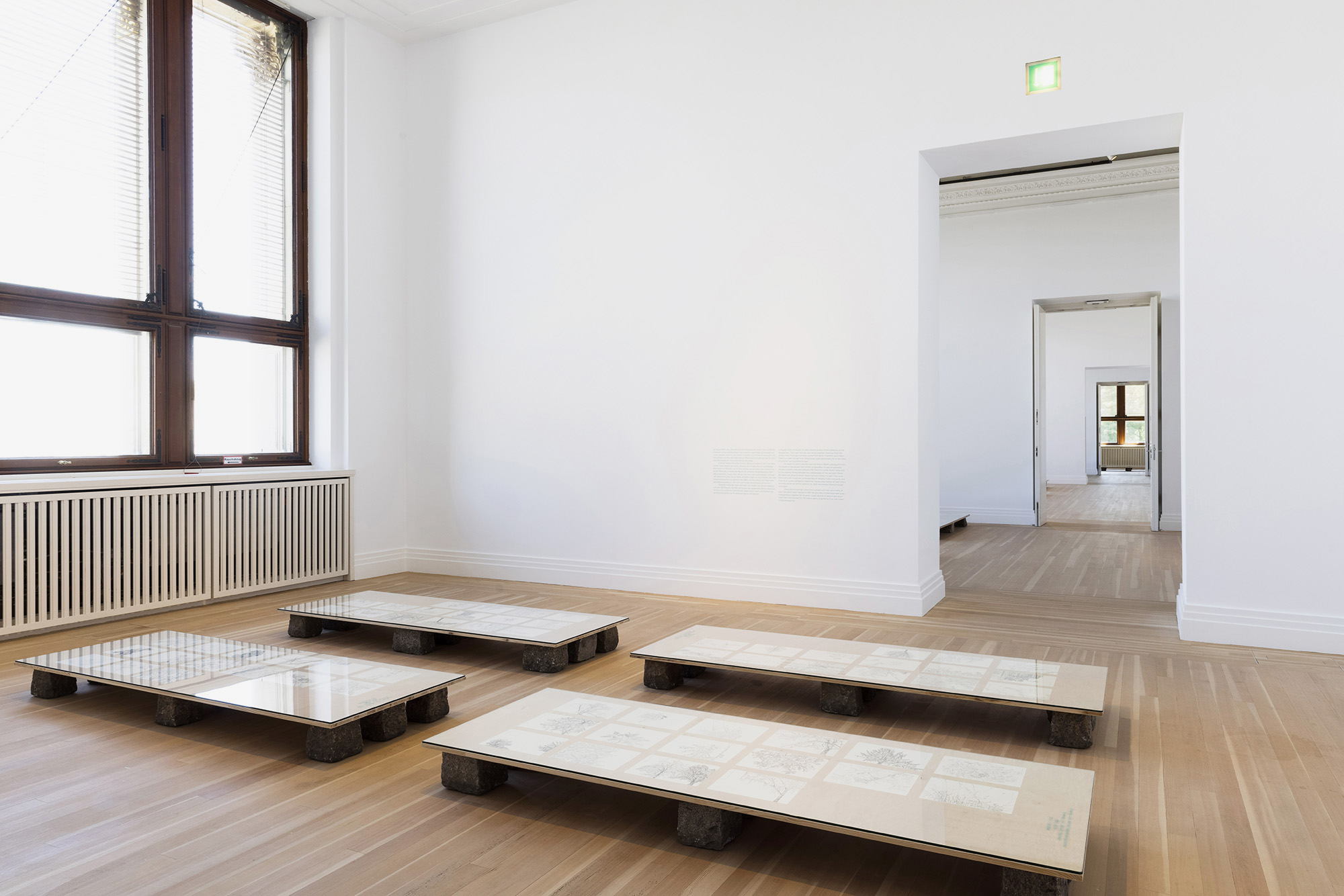
|
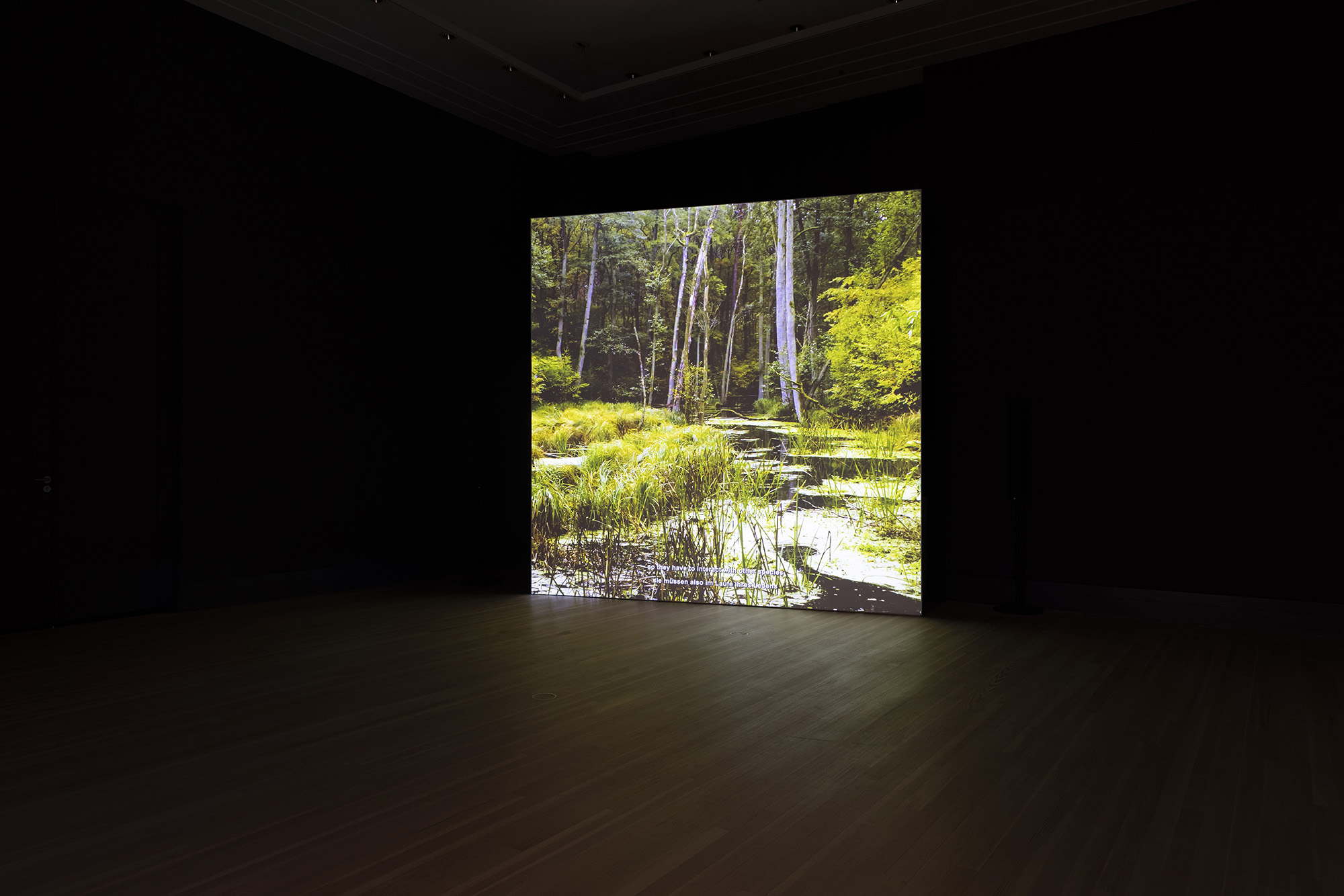
|
The Political Life of Plants 植物的政治生活 1
2021
|
|
|
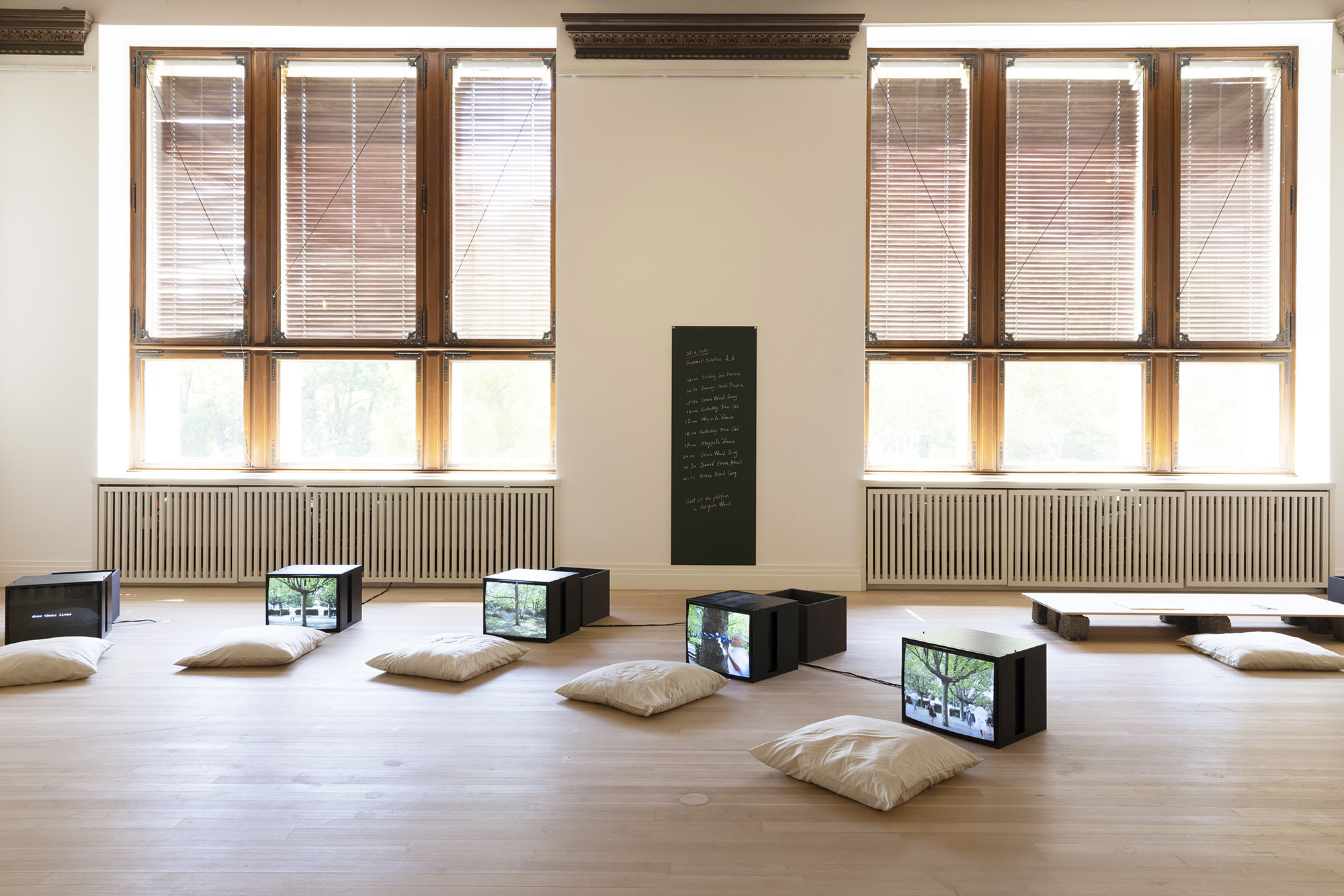
|
Ecosensibility Exercises 生態感悟練習
Drinking Sun Exercise 飲⽇功, 15 Min.
|
Drinking Sun Exercise 飲⽇功Drawing Weeds Practice 繪稊修Collecting Tree Qi 採樹氣Maypole Dance 五⽉柱Sacred Grove Ritual 神森禮Grass Wood Song 草⽊歌 |
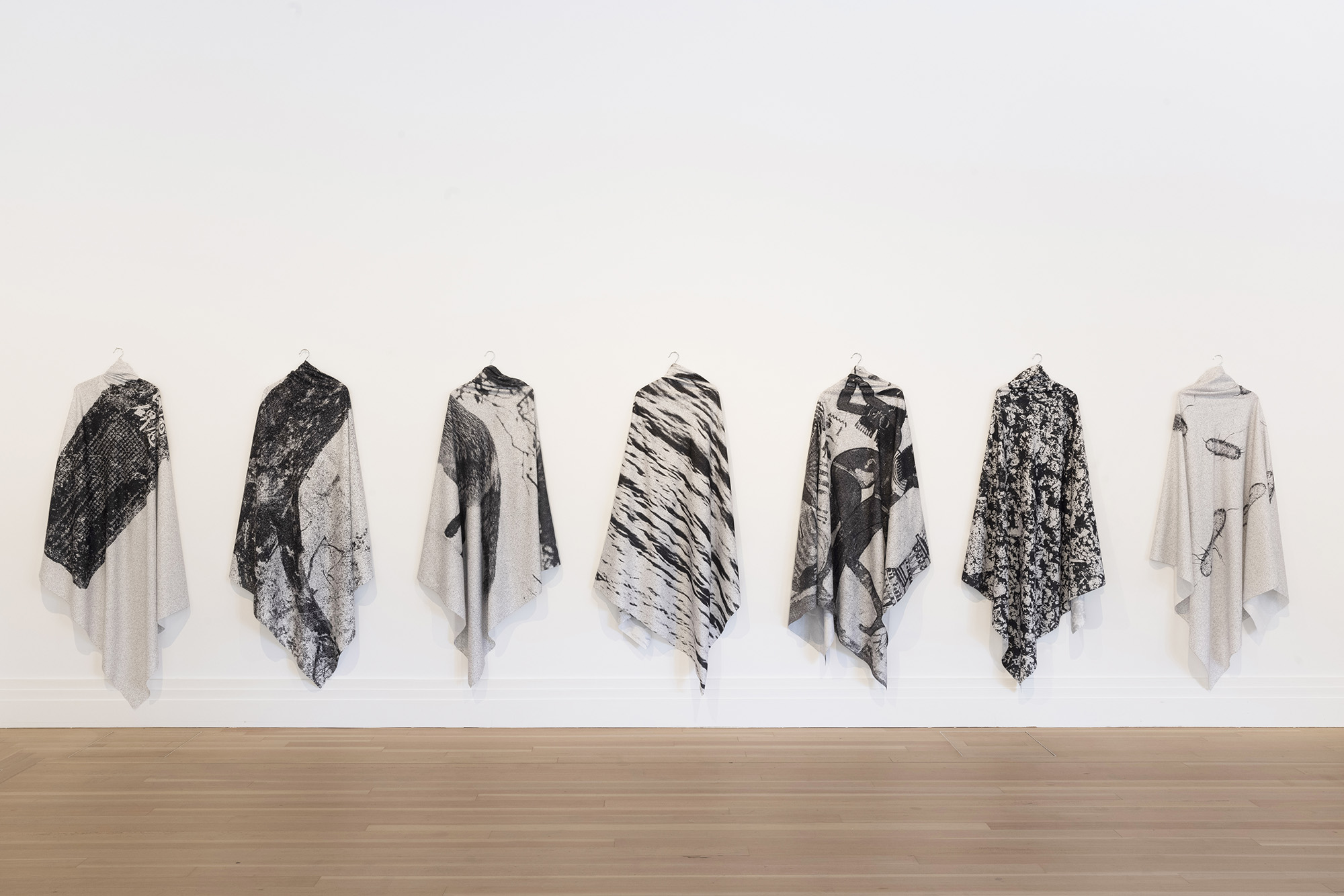
|
Wanwu Council 萬物社
2021
|
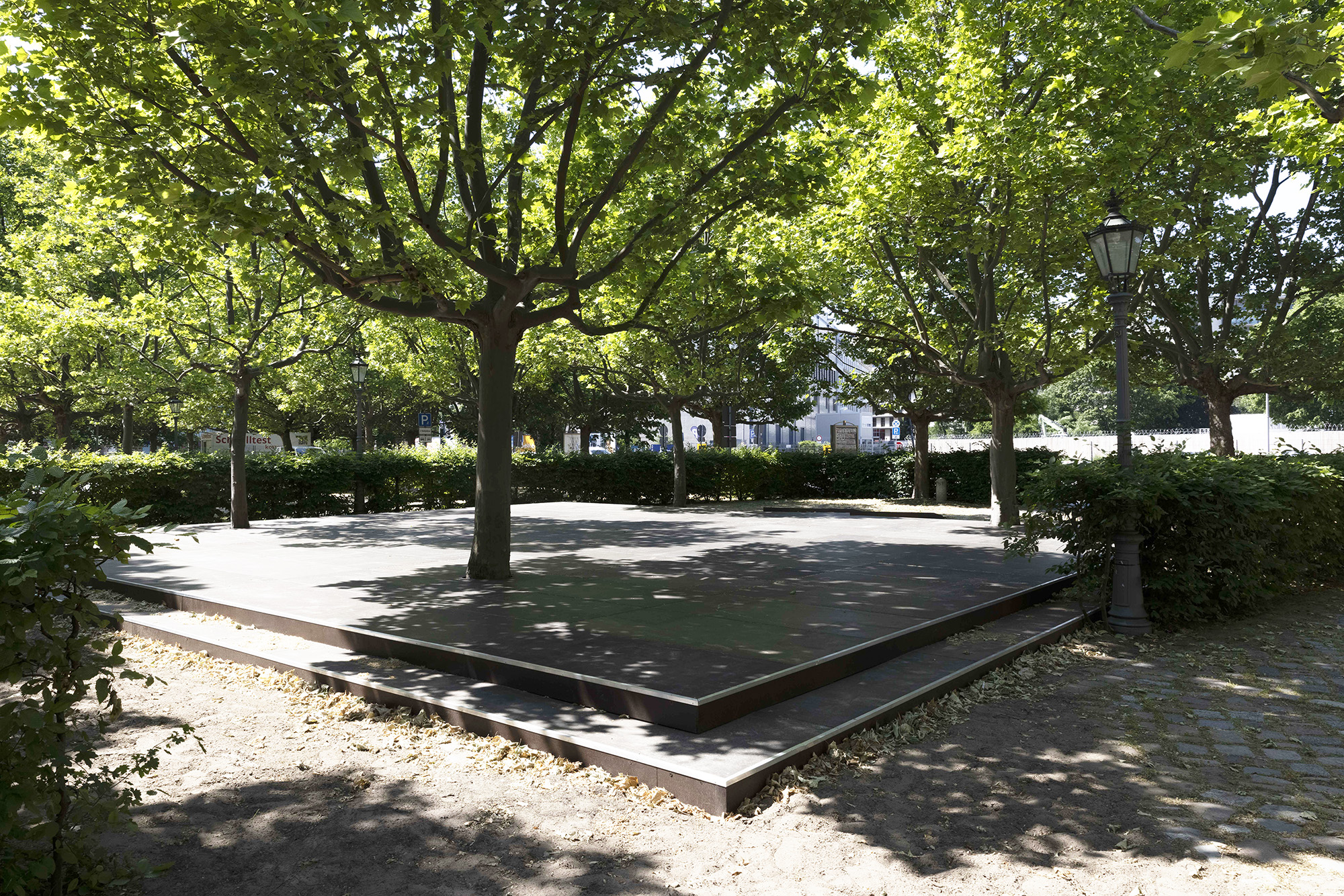
|
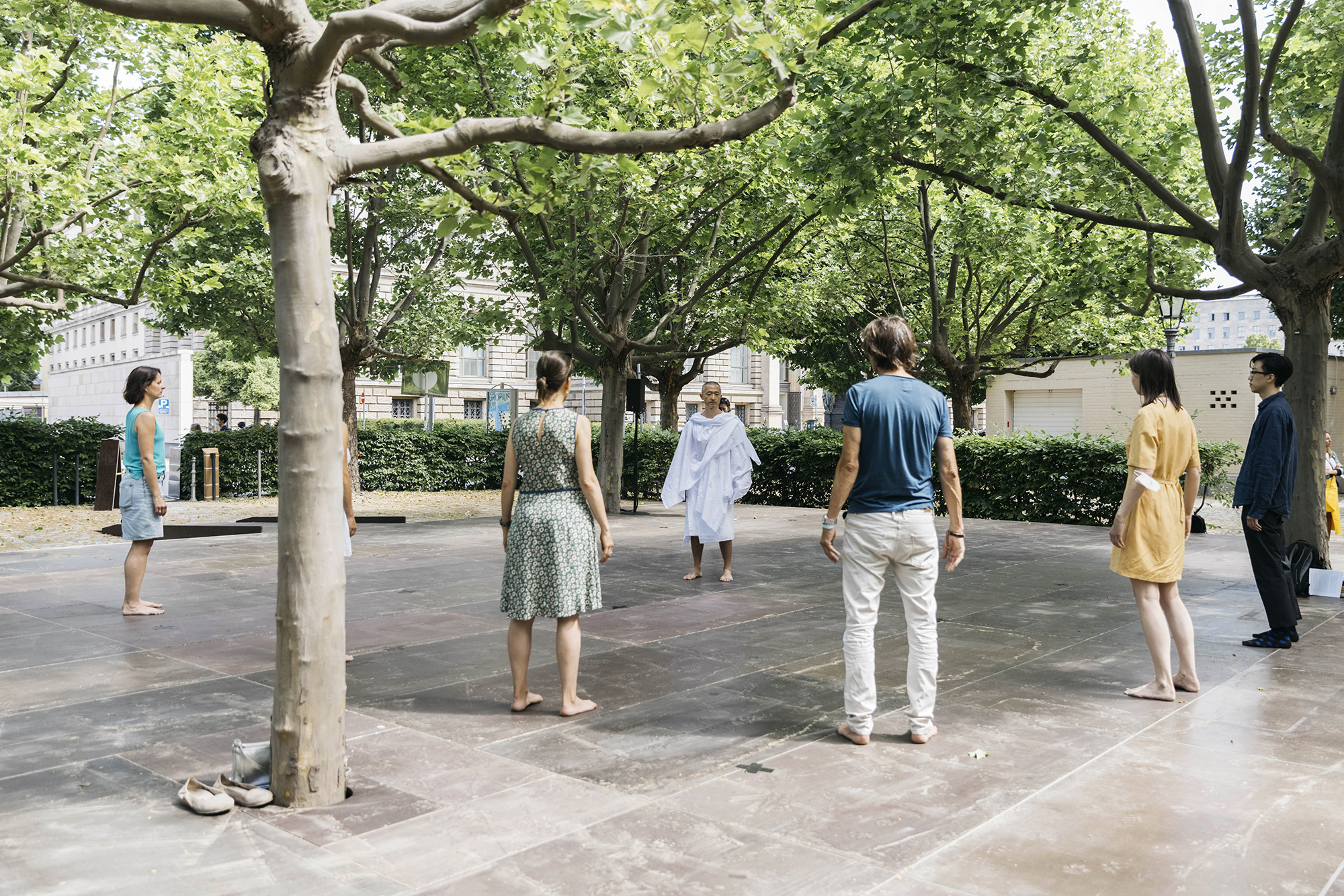
|
Gropius WoodIn 2020 Zheng Bo was the Gropius Bau’s In House: Artist in Residence. The artist’s studio is located on the second floor of the building. When Zheng Bo looked out of the studio window in summer, he saw a flourishing forest of plane trees. He has renamed the car park Gropius Wood to reflect the vibrant community who live here.This platform is an invitation to spend time with the trees, who have been living here since 1987. You can join in with Zheng Bo’s Ecosensibility Exercises 生態感悟練習 here every afternoon from Wednesday to Monday. |
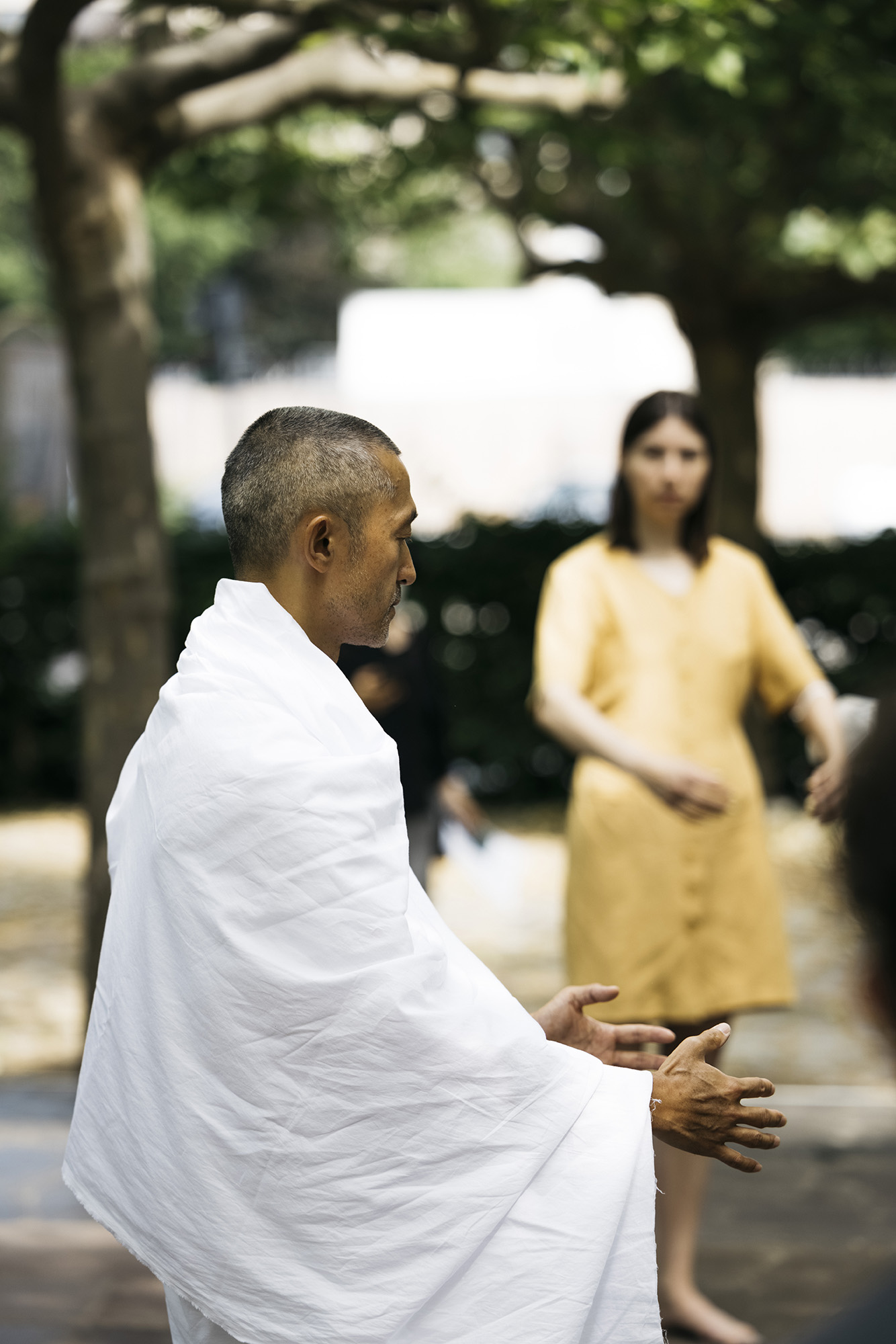
|

⇀ Guided Tour:
|